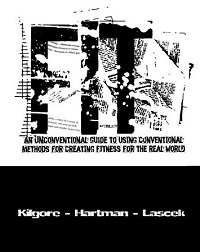There was a time.
A time when manliness was an aspiration. Desired. The epitome of adulthood. A woman wanted a warm, burly embrace complete with a chest hair snuggle. Nowadays the average lass cuddles with a spidery, non-lensed glasses-wearing waif who bruises from a charlie horsed leg.
HAS THE WHOLE WORLD GONE CRAZY?
This aggression will not stand. We must rise to action. The Revolution has gained momentum; the resistance swells every day.
Your mission, brother, if you choose to accept it, is to take flannel back from the hipsters.
These vile creatures are a cancer to our withering society. They claim to be original and avoid the mainstream, yet one of their chief styles of clothing is something worn by manly men for decades. How the hell do they justify that? The result is our nation’s youth growing up to see a bunch of annoying pukes wearing “flannel”. The first decade of a child’s life is very important; their first impressions create the foundations of their mind, ethos, and philosophy. If we allow skinny hipster goobers to falsely represent a sense of manliness, then subsequent generations will aspire to be thin, incapable, and irrelevant. We cannot let this happen.
The weather grows chilly in the northern hemisphere and it is our duty as big, strong men to reset the standard. It is our density. Here are the steps to completing yet another mission in The Revolution.
1. Know thy enemy.
Ladies. Gentlemen. This is what we’re up against (Exhibit B). In your journeys you will come across a shriveled excuse for a male: the hipster. He will don the flannel, as his wont. Your goal is not to engage him in mortal combat, yet to alpha the shit out of him in a respectable manner. Enter the room with confidence and a smile; it will immediately over power his internal shoulder rotation, thoracic flexion, cervical flexion, and atlas extension. And you better believe his pelvis is posteriorily tilted.
If the enemy follows you into the room, make sure to hold the door open. After all, it’s something you should automatically do for all females, especially when you mistaken the dainty hipster for one.
If you must engage the enemy in conversation, introduce yourself with a firm, but not aggressive handshake. His limp-fished hand will tell the real story. It’ll help if your hands are weathered. You probably have accomplished this by lifting weights, but it helps if you chop wood, drink whiskey, or spend time outdoors. The hipster, for example, is not strong enough to even swing an axe.
Smile. Converse. Be polite. Be yourself. For if you act like yourself, you have already won because the hipster is trying to be something he is not. This creature wants. to. fit. in. He will do and wear anything to be a part of a group that is the pukish spawn of urban middle class poons. Christian Lorentzen of Time Out New York claims that metrosexuality is the hipster appropriation of gay culture, as a trait carried over from their “Emo” phase. He writes that “these aesthetics are assimilated—cannibalized—into a repertoire of meaninglessness, from which the hipster can construct an identity in the manner of a collage, or a shuffled playlist on an iPod” (source). They essentially think they are cooler than America — and NOBODY is cooler than America (see Exhibit C for proof).
Do not try and beat the hipster at his own game (which is hypocrisy . Merely present yourself as the amiable manly man you are. It will help if you have chest hair, own at least three knives, or have recently started a fire without matches (and preferably not accidentally in a house). You don’t have to comprehend the enemy, but knowing that he aims to not conform by conforming to an irrelevant cultural style will let you conquer him with standard, old-school manliness.
2. Choosing your flannel.
It’s very important that your flannel is not marketed toward the enemy. Don’t shop in teen or urban sections. In fact, reconsider your clothing store if it has these sections. Outdoor stores are a good start, but I’ve had success at Kohl’s and Goodwill in the past.
Note that cheaper flannel shirts are made of cotton. If you plan on doing any outdoorsy adventuring, aim to get wool or synthetic types of flannel. Cotton is death in the woods because it absorbs water and doesn’t dry quickly. It’s not manly to die in the woods alone.
Aim for the classic flannel look. Hipsters, emo kids, and skateboarders are trying to popularize obnoxious patterns and colors. Before you make your purchase, ask yourself, “Can I wear this outside in a snowy forest and not look like a fuck-head?” If the answer is no, do not make the purchase and consider burning the building down.
3. Wearing your flannel.
Look, I don’t know anything about fashion. But I do know that you shouldn’t ever — EVER — button the top button on your flannel. Especially without buttoning the other buttons, cause then you’ll just look like Konnan from WCW. I’d also question buttoning that second button because it’s a very hipster thing to do. Why do they all do it if they all do it? I thought they were trying to avoid conformity? I guess wearing black-rim glasses, even en mass, really sticks it to the man, huh? Let your neck breathe.
A shirt is optional, but if you forego the under shirt make sure that you have chest hair. Unless they look like pubes. If they look like pubes then chicks aren’t gonna want to snuggle it. Actually, let’s just make a rule that you have to bench 300+ in order to wear flannel without an undershirt. It’ll set a good example for the kids and ensure there’s enough pec for lady cuddling (you don’t have to like cuddling for a woman to nuzzle your chest, just pretend that you do).
The best way to wear flannel is to role the sleeves up to right below the elbow. This allows you to tease nearby females with your forearm power, but it further establishes the stark difference between you and a hipster. Most hipsters will have bony protrusions coming out of their flannel arm holes. If you are concerned by a lack of forearm development, then promptly throw in several thousand reps of hammer curls a day. By having rippling steak forearms, you’ll fit the archetype of “man” or “lumberjack” — you know, the things that flannel-wearing emits. This is what we want and need; your flannel presence should be memorable. Not “memorable” in the sense that you drink so much whiskey that you flip tables after standing on them while air guitaring, but if someone refers to you as “The Brawny Man”, you did your job. You want people to go home and say, “God DAMN did that guy look manly in that flannel.” They should either a) want to look like that or b) want to find and romance a dude that looks like that. The latter applies to females, but if it’s two consenting dudes then I guess that’s cool too.
Fight the Good Fight
Remember, every time you clothe yourself in the morning you make a statement. Do you want that statement to say, “I will conform to how skinny, no-lifting puke-faces are shaping modern society”? Or will you say, “God damn it, I’m a man”? We shall take back America.
Join The Resistance — WEAR FLANNEL!






